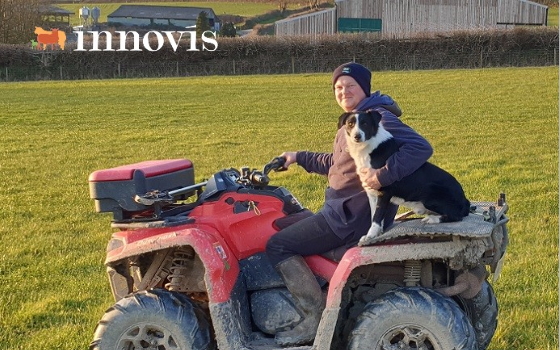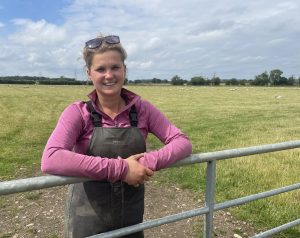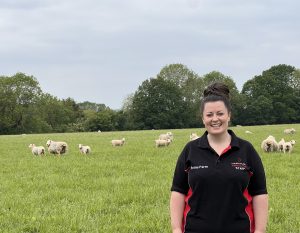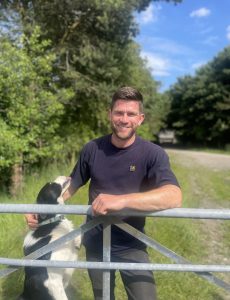with kind permission of Daniel Blament and family
Investing in Innovis genetics along with introducing a complementary forage based system is enabling Daniel Balment to rapidly expand the family’s flock more than threefold to 1,000 ewes and in turn, enhance the enterprise’s efficiency.
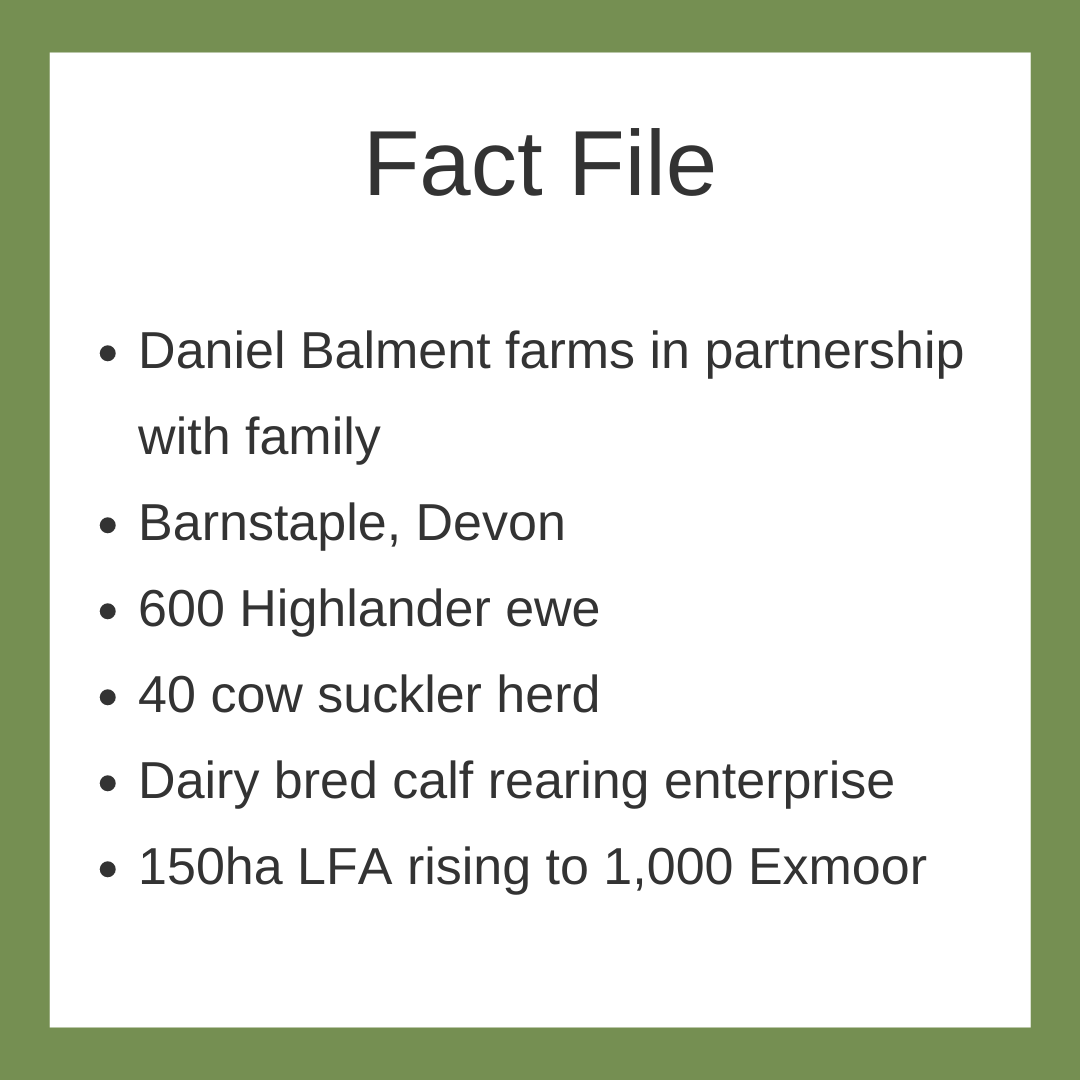
“We’ve swapped a 350-ewe flock of Suffolk cross and Texel cross ewes for Highlanders and seen the scan increase from 150% to this season’s 183%. Ram to ewe ration has stepped up from a ratio of one to 40 to 50 ewes to 100 ewes to one ram with 75% of the flock lambing within the first two weeks, whilst mature ewe weight has reduced from an average 75kg to 60kg and subsequently helped us to increase stocking rate.
“The Highlander ewes make very good mothers. They require very little, if any intervention at lambing and after turn out they take their lambs with them, they are very protective which is one reason why I like the Highlander so much – we run the unit with minimum labour; parents Tony and Marion help out part time, my wife, Sally-Ann runs the office and we had one part time member of staff who has just commenced full-time.
“We’re also achieving more, better quality lambs. Pure Highlander wethers and ewe lambs not kept for replacement purposes are going on to finish off grass at 18kg to 20kg from 14 weeks.”
Dan has also introduced the Abermax, the grass reared performance recorded meat sire to 50% of the flock, and says lambs are finishing even faster off grass at slightly heavier weights.
Added to that is his new focus on maximising forage. “We wean at 12 weeks and introduce the lambs to a rotational grazing system amounting to 49ha. The system has helped us to push grass growth and increase its availability by over 30% during the season. We’re now able to sell all lambs finished off grass,” he explains.
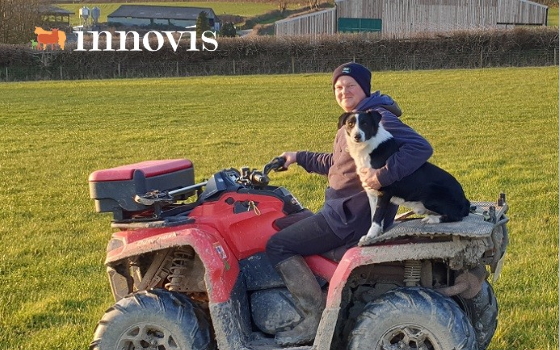
“We’d reached a point where we wanted to simplify the system and expand the flock at the expense of our 60 cow suckler herd and also introduce a dairy bred calf rearing enterprise. At the time, flock performance had dropped to 140% lambs reared, consequently we agreed to start to investigate other systems. The real journey began in 2015 ago when we started to roll out the plan.”
He continues: “I was interested in the Highlander. Originally bred in New Zealand, the damline is performance recorded under huge selection pressure on grass based systems. Here in the South West I’d seen the Highlander working well on other farms in terms of requiring moderate labour, good motherability, good milk and rearing good lambs, and that’s proving the case. I was also re-assured that all Innovis genetics have all been MOT’d, quarantine drenched and are accompanied with comprehensive health treatment records.”
The flock is over wintered off farm and on arrival home, introduced to strip graze 8ha of root crops, and eventually to lambing indoors. “We chose to build a new shed two years ago as an insurance policy to account for the increasing number of ewes, simply because we have an average 60” rainfall, and we find that by keeping the ewes inside for approximately three weeks prior to mid-March lambing enables us to have fresh grass to turn out on to immediately afterwards.”
He adds: “We’re now on schedule to expand the flock to achieve that critical mass of 1,000 ewes within the next two years with replacements which have been carefully selected from our performance recorded ewes.”
Find out how the Highlander or Abermax could work for you at Innovis Breeding
